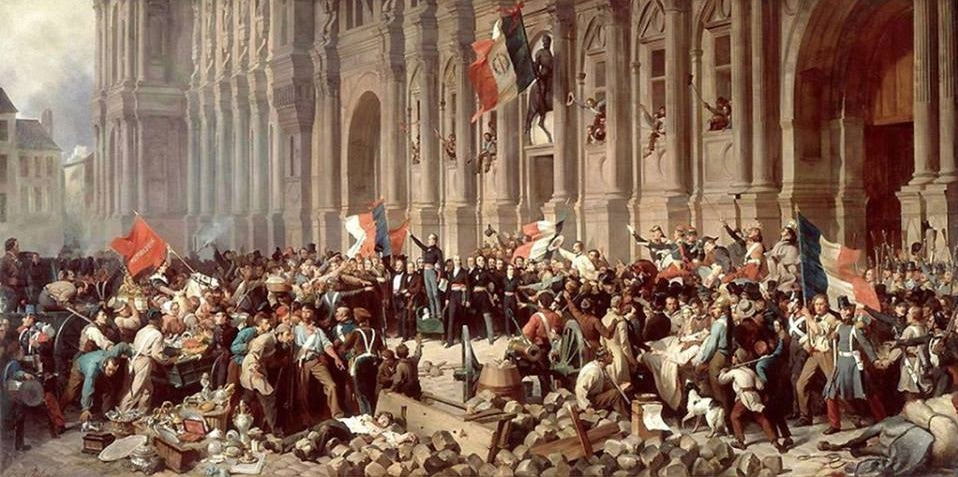77% of national flags contain red.
...Which is a bit disturbing because it is generally used to refer to bloodshed or might in battle - partially in a "let's honor the past" sort of way, but mostly in a "don't fuck with us" sort of way.
1) Be nice and; have fun
Doxxing, trolling, sealioning, racism, and toxicity are not welcomed in AskLemmy. Remember what your mother said: if you can't say something nice, don't say anything at all. In addition, the site-wide Lemmy.world terms of service also apply here. Please familiarize yourself with them
2) All posts must end with a '?'
This is sort of like Jeopardy. Please phrase all post titles in the form of a proper question ending with ?
3) No spam
Please do not flood the community with nonsense. Actual suspected spammers will be banned on site. No astroturfing.
4) NSFW is okay, within reason
Just remember to tag posts with either a content warning or a [NSFW] tag. Overtly sexual posts are not allowed, please direct them to either [email protected] or [email protected].
NSFW comments should be restricted to posts tagged [NSFW].
5) This is not a support community.
It is not a place for 'how do I?', type questions.
If you have any questions regarding the site itself or would like to report a community, please direct them to Lemmy.world Support or email [email protected]. For other questions check our partnered communities list, or use the search function.
6) No US Politics.
Please don't post about current US Politics. If you need to do this, try [email protected] or [email protected]
Reminder: The terms of service apply here too.
Logo design credit goes to: tubbadu
77% of national flags contain red.
...Which is a bit disturbing because it is generally used to refer to bloodshed or might in battle - partially in a "let's honor the past" sort of way, but mostly in a "don't fuck with us" sort of way.
Fun fact: the flag of Jamaica is the only country flag which has neither red, white or blue.
The old flag of Lybia fit that category as well.
During the Golden Age of Piracy, pirates would fly a red flag to communicate no quarter. That meant that if anyone decided to fight back would be killed because they were not taking prisoners.
Imagine being a miserable English sailor months from home, broke af, and hungry, when you're out in the ocean about to head back and you see this pulling up:

On the flip side, red is also commonly used to represent love and passion.
Red. It is used and associated with countless movements, flags, banners, all across the political spectrum.
Red is associated with social democracy, socialism, communism in most countries; almost only in the US is it the color of the conservative party.
Just like most common standards, the US decided to go full ham and use their own.
Which was basically a coincidence of one close election night and the TV networks trying to act objective. Parties don’t have official colors in the U.S. and every network was using red, white, and blue for their maps. To use red for Democrats would have implied a connection to communism and white was obviously for states without results yet. So, they all, independently, chose blue for Democrats, red for Republicans, and white for states whose polls hadn’t closed.
Purple is probably the only one that I’m aware of on your list where there’s a legit logic behind it, since dyes used to be harder to come by
Red for sure.

Black has the most universal meaning of solidarity, seriousness, mourning, and formality across cultures and peoples.
Japanese budhist monks use black for their clothes as it simbolizes purity, or as black being the most pure color. In very few instances, they may wear purple or gold, but that's due status and a latter addition.
In a funeral, only the deceased would wear white, I don't remember why though, but for a while wearing white was in bad taste.
Wearing all black is also common for the Catholic clergy, and for a long time most brides used black for their wedding dress: https://kentuckykindredgenealogy.com/2014/12/13/history-of-the-black-wedding-dress/
Probably purple because of how historically inaccessible it was
Not a single color, but in Chinese tradition there were five colors of equal political significance corresponding to the Wuxing cycle of changes—black, red, cyan, white, and yellow. Each dynasty was associated with a color (with other associated traits), and was expected to be followed by one of two other colors (depending on whether the succession would be orderly or revolutionary).